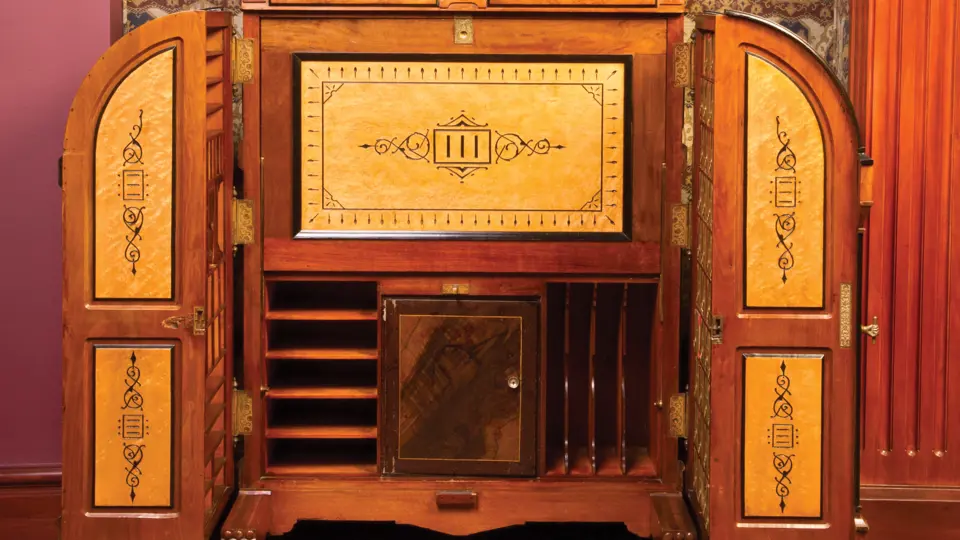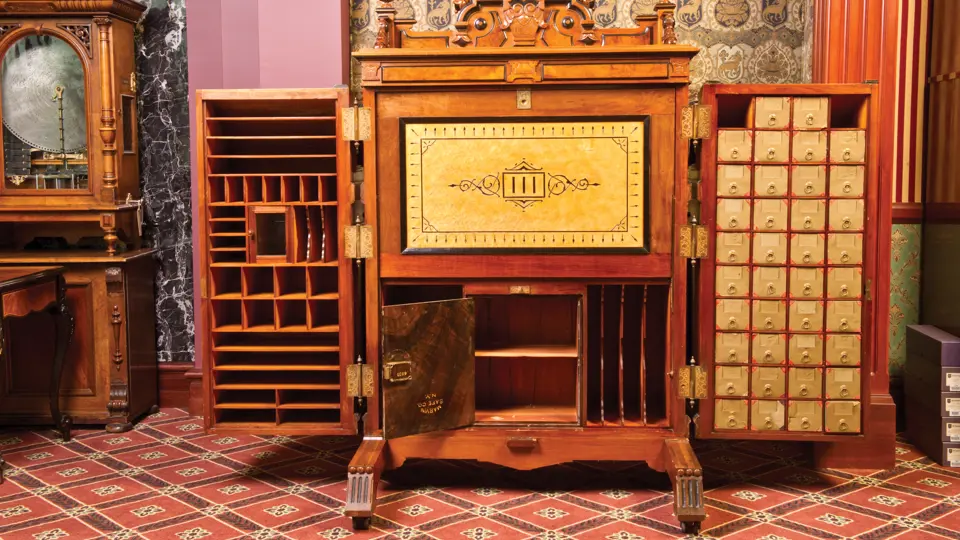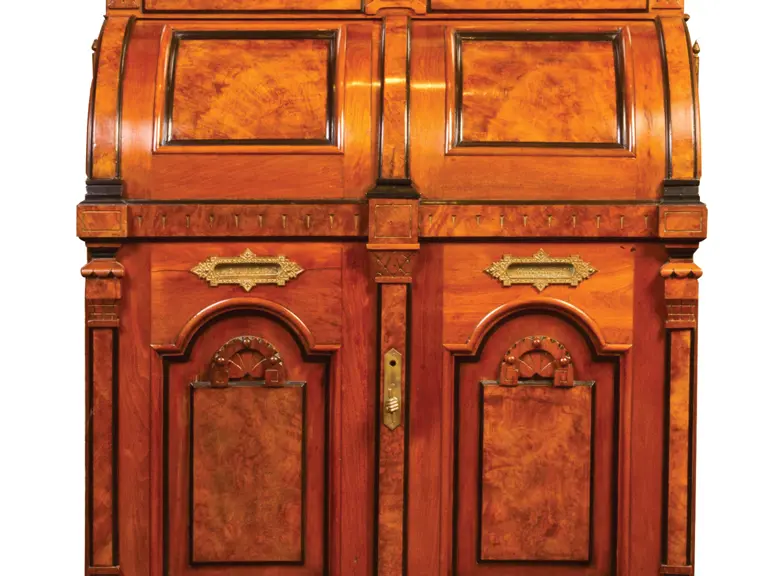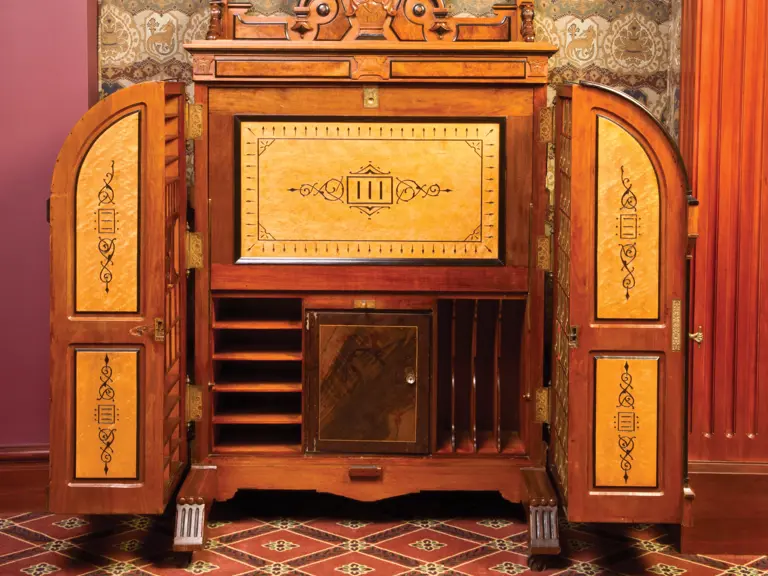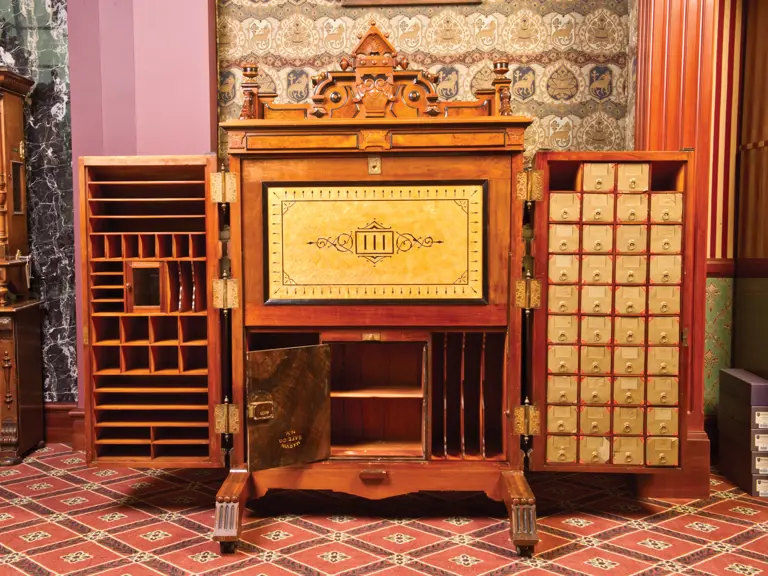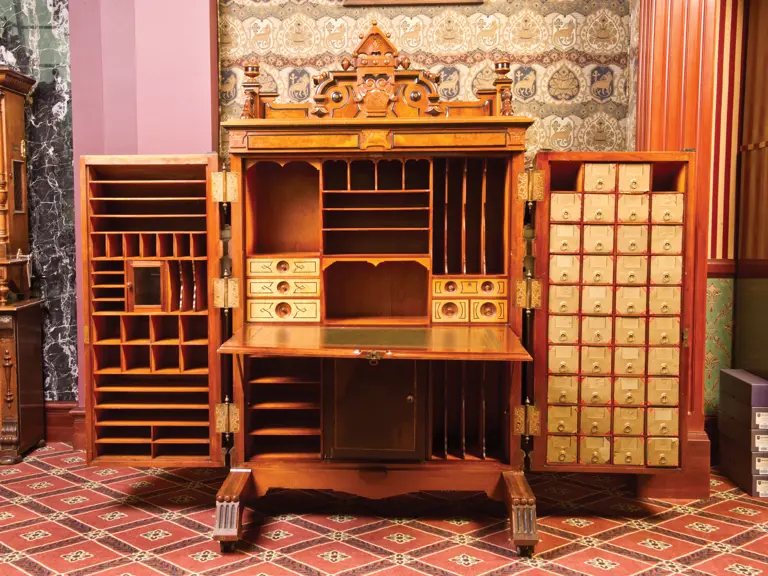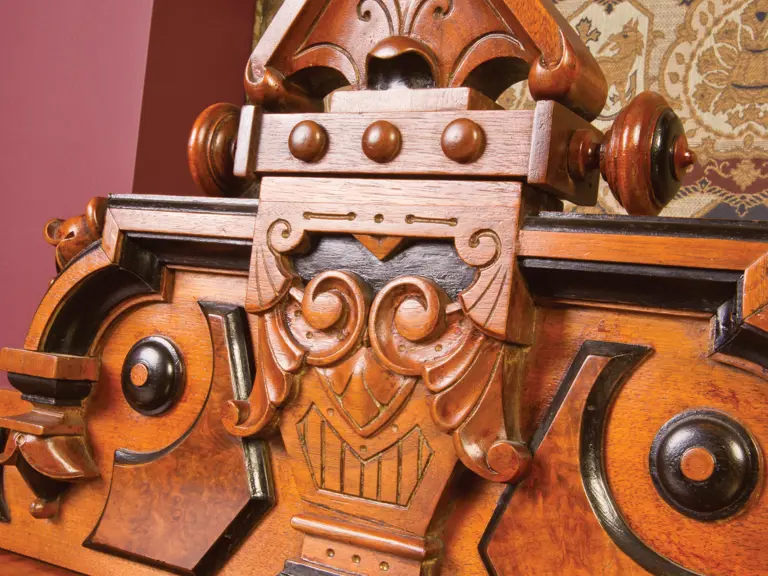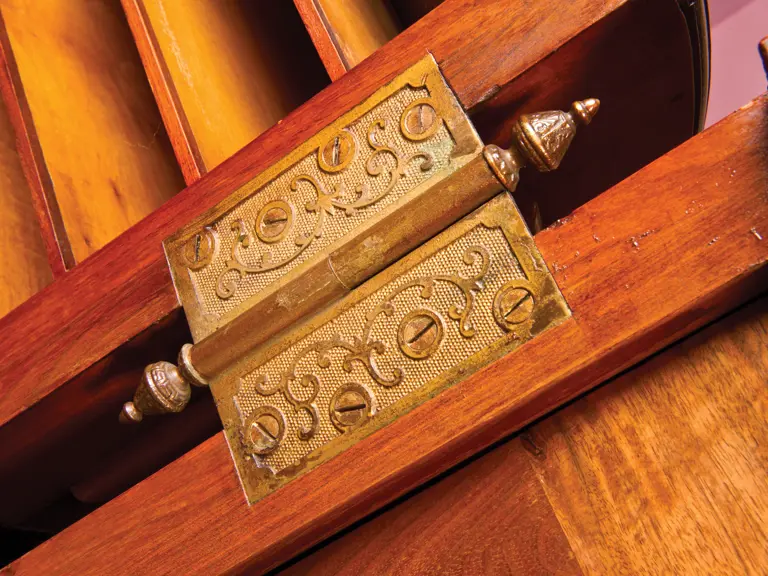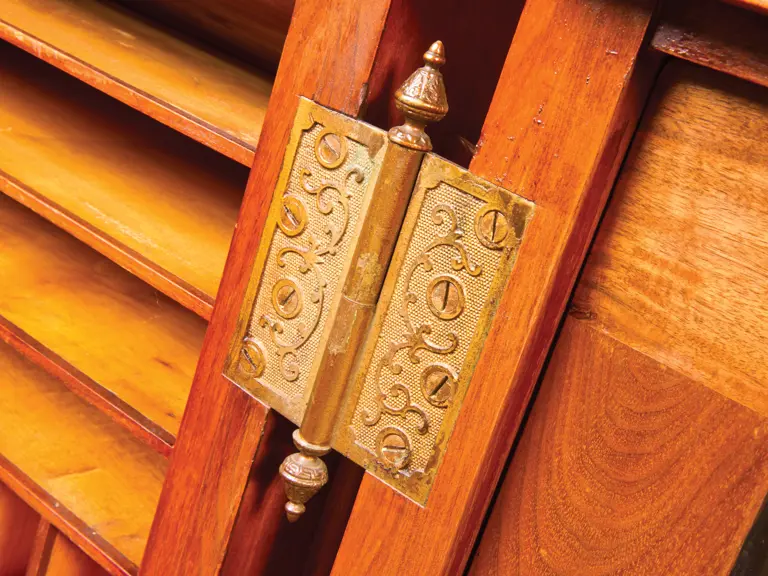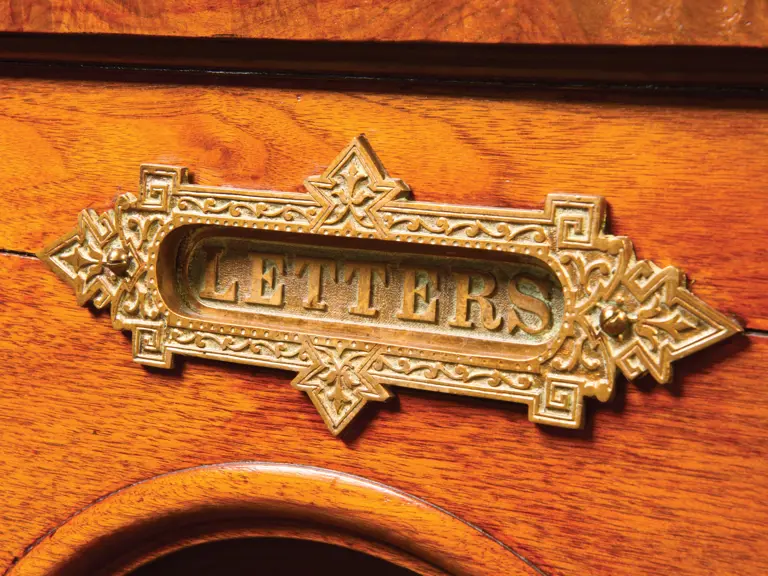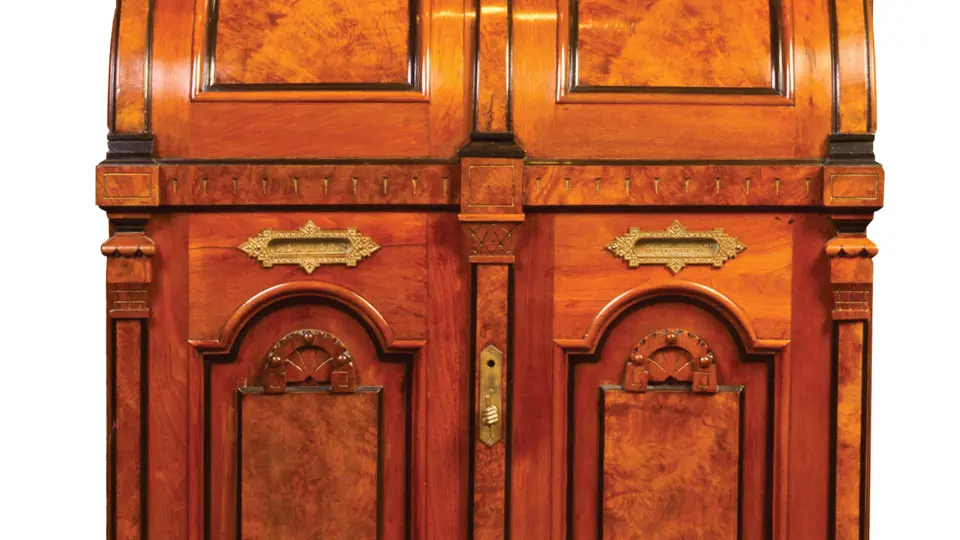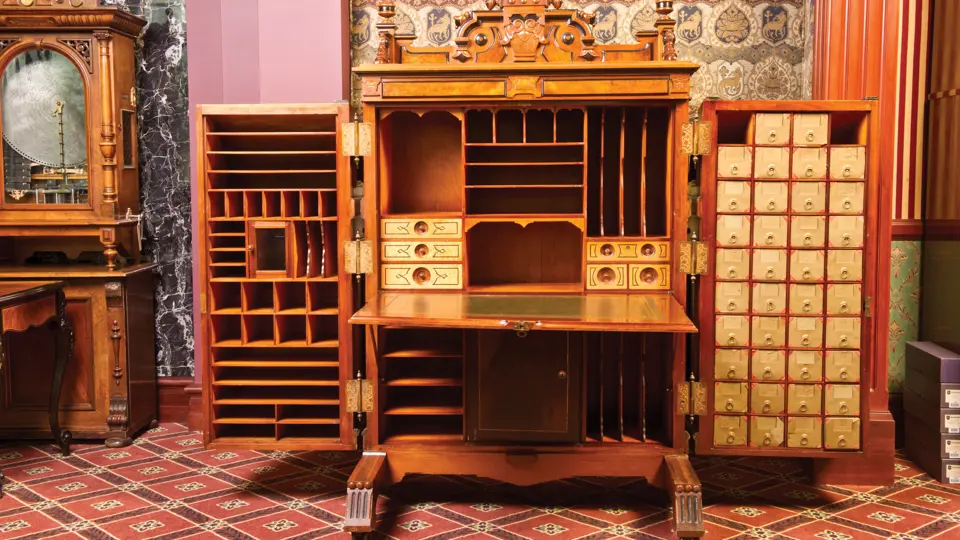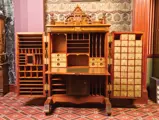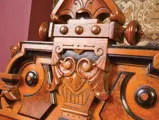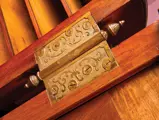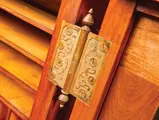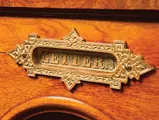 | Boca Raton, Florida
| Boca Raton, Florida
Circa 1875-1880. Typical form, with an elaborately shaped and carved crest and allover incised stylized foliage and scrolls. Ornamental doors feature letter slots, one marked "LETTERS" the other "MANUFACTURED BY THE WOOTON DESK CO. INDIANAPOLIS IND. PAT. OCT. 6 1874." Interior with a leather writing surface and varied compartments and drawers, interior doors with slots and pigeon holes or removable hinged cartons. Interior lower center section with the unusual feature of an integrated safe by "Martin of New York," raised on two incised and fluted trestles with down-swept legs. Minor repairs and losses, some minor splitting of veneer resulting from shrinkage, lacking two interior compartments on the right side, no liners evident for the cardboard containers. 47x77x30 inches.
&cf. The Wooton desk is undoubtedly one of America's most recognizable Victorian Era pieces of furniture. In 1870 William Wooton established the Wooton Desk Company after winning a $5.00 First Prize for a school desk he designed and exhibited at the Indiana State Fair. In 1874 Wooton applied for and received a US patent for a novel and ingenious organizational tool sometimes referred to as the 'businessman's companion.' Mass production of a variety of Wooton Desks began in 1874 and continued through 1891. William Wooton died in 1907.
Wooton's patents merged skilful craftsmanship with the novel technologies of the Industrial Revolution. The design of the desks provided an ingenious solution to the growing complexity of the businessman's increasing problem of organization. Wooton's customers included Queen Victoria, the American Presidents Ulysses S. Grant, James Garfield and Benjamin Harrison, and noted business tycoons John D. Rockefeller, Joseph Scribner and Jay Gould. William Wooton's patent desks remain highly collectible. They are included in the collections of almost all major museums with 19th century furniture and decorative arts collections.

